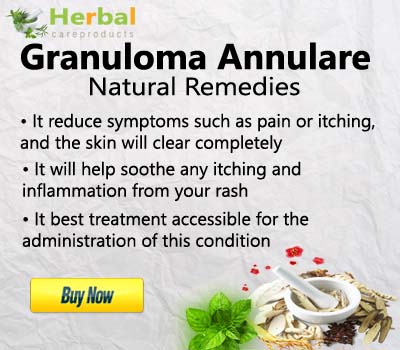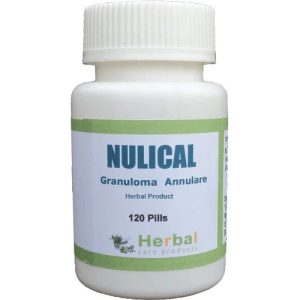Topical Treatment for Granuloma Annulare: Relief for Skin Discomfort

Introduction
Living with the discomfort and unsightly appearance of granuloma annulare can be frustrating. This skin condition, characterized by raised, ring-shaped bumps on the skin, can affect anyone regardless of age or gender. While there is no definitive cure for granuloma annulare, various treatment options can help manage the symptoms and provide relief. One such approach is topical treatment, which involves applying medications directly to the affected areas. In this article, we will explore the different aspects of topical treatment for granuloma annulare and discuss the best available options. Herbal Remedies for Granuloma Annulare are very essential in this condition.
What is Granuloma Annulare?
Granuloma annulare is a chronic skin condition that presents as small, firm bumps or rashes arranged in a ring or circular pattern. These lesions typically appear on the hands, feet, elbows, or knees, although they can occur on any part of the body. While the exact cause of Natural Remedies for Granuloma Annulare is unknown, it is believed to be an immune-mediated condition.
Types of Granuloma Annulare
Granuloma annulare can be classified into different types based on its presentation and characteristics. The most common types include localized granuloma annulare, generalized granuloma annulare, perforating granuloma annulare, and subcutaneous granuloma annulare. Each type varies in terms of the extent and severity of the lesions.
Causes and Risk Factors
The exact cause of granuloma annulare remains unclear. However, certain factors may contribute to its development. These include genetic predisposition, autoimmune conditions, sun exposure, insect bites, and certain medications. Individuals with a family history of granuloma annulare or those with compromised immune systems may be at a higher risk.
Symptoms and Diagnosis
The primary symptom of granuloma annulare is the appearance of raised, reddish or skin-colored bumps in a circular or ring-like pattern. These bumps may be itchy, tender, or unsightly, causing distress to those affected. To diagnose granuloma annulare, a dermatologist will typically perform a physical examination and may order additional tests such as a skin biopsy to rule out other conditions.
Traditional Treatment Options
Before delving into topical treatment, it is essential to understand the traditional treatment options available for granuloma annulare. These include corticosteroid injections, oral medications, cryotherapy, and light therapy. While these methods may provide some relief, they often come with potential side effects and may not be suitable for everyone.
Topical Treatment for Granuloma Annulare
Topical treatments play a vital role in managing the symptoms of granuloma annulare. These medications are directly applied to the affected areas and are available in various forms such as creams, gels, ointments, or lotions. Topical treatments work by reducing inflammation, soothing the skin, and promoting the healing process.
Best Topical Medications
Several topical medications have shown effectiveness in treating Home Remedy Granuloma Annulare. These include corticosteroids, calcineurin inhibitors, retinoids, and topical immune response modifiers. Each medication works differently and may be prescribed based on the severity and location of the lesions. It is crucial to consult a dermatologist to determine the most suitable topical treatment for your specific condition.
How to Apply Topical Treatments
To maximize the benefits of topical treatments, it is important to apply them correctly. Start by thoroughly cleaning the affected area and gently patting it dry. Apply a thin layer of the medication and massage it into the skin until fully absorbed. Follow the instructions provided by your dermatologist and avoid applying excessive amounts of the medication, as this can lead to adverse effects.
Potential Side Effects
While topical treatments are generally safe, they can occasionally cause side effects. Common side effects may include skin irritation, redness, itching, or dryness. In rare cases, severe reactions such as allergic dermatitis or thinning of the skin may occur. If you experience any concerning side effects, consult your dermatologist promptly.
Lifestyle and Home Remedies
In addition to topical treatments, certain lifestyle changes and home remedies can help manage granuloma annulare. These include avoiding tight clothing, protecting the skin from sun exposure, practicing good hygiene, and moisturizing the skin regularly. Although these measures may not cure the condition, they can alleviate discomfort and prevent exacerbation. To get rid of this condition use, Treatment for Granuloma Annulare
Natural Supplements for Granuloma Annulare
Some individuals explore natural supplements as complementary treatments for granuloma annulare. While scientific evidence is limited, certain supplements such as turmeric, green tea extract, fish oil, and aloe vera have shown anti-inflammatory properties that may benefit the skin. Buy Best Herbal Supplements Products and Natural Remedies. It is important to discuss the use of supplements with your healthcare provider to ensure they are safe and appropriate for you.
Prevention Tips
As the exact cause of granuloma annulare is unknown, preventive measures are challenging to establish. However, minimizing sun exposure, maintaining a healthy immune system, and avoiding potential triggers such as insect bites or skin injuries may help reduce the risk of developing new lesions or flare-ups.
When to See a Doctor
If you suspect you have granuloma annulare or notice any unusual skin lesions, it is advisable to consult a dermatologist for an accurate diagnosis and appropriate treatment. A dermatologist can provide expert guidance, prescribe suitable medications, and monitor your condition over time.
Conclusion
Living with granuloma annulare can be challenging, but effective management is possible. Topical treatments offer a valuable approach to relieving discomfort and reducing the appearance of lesions. By working closely with a dermatologist and following a comprehensive treatment plan, individuals with granuloma annulare can experience improved quality of life and regain confidence in their skin.





